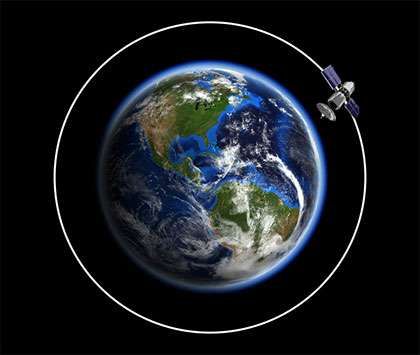When ordinary smartphones connect with satellite technology
PLDT and its wireless arm Smart Communications, Inc. (Smart) are exploring space-based mobile broadband communications as part of their initiatives to bring connectivity to more Filipinos across the country.
Recently, Smart signed a Memorandum of Understanding (MoU) with US-based AST SpaceMobile, Inc., a company building “the first space-based cellular broadband network accessible directly by standard mobile phones.”
Through this pioneering technology, Smart’s mobile customers in far-flung areas would be able to enjoy high-speed internet using ordinary smartphones through the use of low-earth orbit (LEO) satellites –a first in the Philippines.
While PLDT and Smart’s integrated fixed and wireless networks have nationwide reach, given the nation’s terrain and geography, there is a need to continue looking for alternative solutions to complement their continuing 4G and 5G network rollout, which can be challenging to do in a disaster-prone archipelago with varying terrain of jungles, plains, mountains, and islands.
‘Cell site in the sky’

“This innovative space-based cellular broadband communication connects directly to our cellphones; no special device is needed. As a supplement to our mobile coverage, this can fill the gap in providing our services to the deepest rural and remote areas in the country, so our customers can remain connected,” said Mario G Tamayo, Head of Technology at PLDT and Smart.
Once launched, the service is expected to cover hard-to-reach areas, enabling online learning for students, e-commerce and online banking for indigenous peoples in the mountains and farmers in rural areas, and cater to Filipinos out at sea. This satellite technology can also help in disaster preparedness and resiliency efforts by providing an alternative network in times of calamities, which can impact cell sites on the ground.
“In this latest innovation, Low-Earth Orbit satellites of AST SpaceMobile will be explored to deliver 4G and 5G signal to mobile devices of Smart customers. Compared to GEO satellites, LEO satellites are significantly closer to earth at around 700 kms, allowing them to deliver higher bandwidth with lower latency and communicate with regular smartphones, ” said Arvin L. Siena, Head of Technology Strategy and Transformation Office at PLDT and Smart.
“As a nation, some of our countrymen live off the sea, where signal is not available. These include fisherfolk, seafarers and Filipinos who travel between islands. In addition, the service can also serve Filipinos who live in the hinterlands who rely on satellite TV to enjoy entertainment, Gen Z’s who like to hike in nature, as well as search and rescue teams during disasters,” said Jane J. Basas, Head of Consumer Wireless Business at Smart.
About PLDT
PLDT is the Philippines’ largest fully integrated telco company. Through its principal business groups — from fixed line to wireless — PLDT offers a wide range of telecommunications and digital services across the Philippines’ most extensive fiber optic backbone, and fixed line and cellular networks.
PLDT is listed on the Philippine Stock Exchange (PSE:TEL) and its American Depositary Shares are listed on the New York Stock Exchange (NYSE:PHI). PLDT has one of the largest market capitalizations among Philippine — listed companies.
Further information can be obtained by visiting www.pldt.com
About Smart
Smart Communications, Inc. (Smart) is a wholly-owned wireless communications and digital services subsidiary of PLDT, Inc., the Philippines’ largest and only integrated telecommunications company. Smart serves approximately 96% of the country’s cities and municipalities with its combined 2G, 3G, 4G LTE, and 5G network*, providing mobile communications services, high-speed internet connectivity, and access to digital services and content to over 71.8 million Filipinos*, supporting the country’s growing digital economy, and providing the best customer experience for an increasingly digital Filipino lifestyle.
*as of end March 2021

